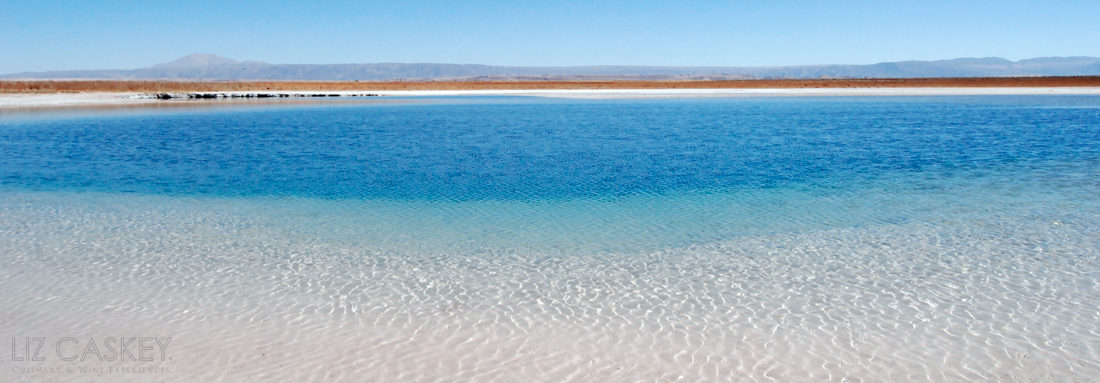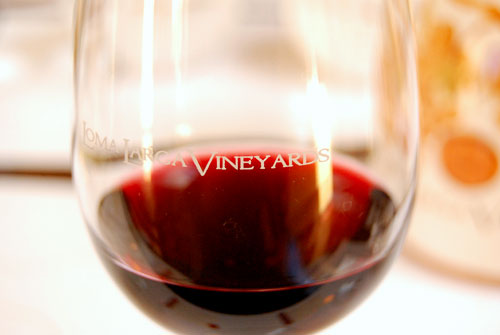Argentina may be stealing much of the thunder when it comes to Malbec but I have some news for you guys, Chile has some rocking Malbec. AND, it’s a 180 turn from our next door neighbor.
Let’s investigate because this has become a theme of personal interest for me. But first, how about a flash 101 study on Malbec. Then we’ll dive into discovering how it’s quite different in Chile from the “other” side. As you all know, terroir plays the key role in the final personality of ANY wine and Malbec is no exception. Different place, different climate, different wine.
Malbec is a red grape with an inky, purple color that can have tannins anywhere from smooth (Argentina) to sand paper-like (France). Malbec hails from the southwest of France in a region called Cahors where they refer to it as cot noir, or auxerois. In France, it’s fairly tannic compared to its new world expression. Malbec arrived in the mid-1800s to Argentina where it perfectly adapted to the arid climate in Mendoza, and today is widely cultivated in the country’s other wine growing regions.
While Malbec in France always struggled to reach its optimum maturity, as a mid-season ripener with hot, dry conditions, it always gets fully ripe. So naturally in a hot, dry, desert-like climate it thrives. Malbec in many cases handles the heat better than Cabernet or Merlot and is resistant to cooked flavors yet retains the characteristic spicy aspect. Results? Full, round, silky tannins yet lots of structure (this is no weeny wine).
Cross the Andes into Chile and you have similar arid conditions although the role of microclimates and thermic oscillation in Chile, with its two mountains ranges, takes on new meaning. Vintners are starting to think outside the Cabernet & Carmenere box and experiment with new red varietals like Malbec. It may take some trial and error, guaranteed a lot of soil and climatic studies, in addition to playing with sun exposition as to where to plant the vines. However, there are vineyards in all the major wine valleys of Chile now hitting it spot on with Malbec.
Here’s a round up of my favorite Chilean Malbecs from the different valleys with a mini discussion on why these are flourishing and how they differ in their expression. So next time you’re at your wine shop, depart from the normal Argentine malbec and try a Chilean version. These are, across the board, fresher, equally juicy, and will open your mind. Ahhhh.
Loma Larga Malbec 2007 (Casablanca) US$18
A Malbec in a cold, foggy oceanside valley? Well, like everything in wine, and life, it all depends. Owner Felipe Diaz took painstaking amounts of time to study where and how to plant his Malbec after an attempt to grow Cabernet tanked. Well, his intuition served him well. This is the knock-your-socks off Malbec coming from Chile. An oddity in a valley that tends to produce mostly Chardonnay, Sauvignon Blanc, and Pinot. However, the right sun exposition, sandy soil, and cool breezes which allow for a long, slow maturation and amazing acidity, combined with delicate handling with no over-oaking in the winery have yielded palate-blowing results.
Notes: The nose is full of berries, sour cherries, earth, violets, and even a peachy scent. In the mouth, this wine is long, elegant, silky yet explosive. The acidity is something to be reckoned with–in a good way. Seriously, the acidity of this wine (and all of Loma Larga’s wines) is memorable. It makes your mouth water. It gives the wine an edge yet behind it are generous, supple tannins and more berry flavors. Harmonious, delicious. My favorite Chilean Malbec hands down.
Perez Cruz Reserva Limited Edition Malbec 2006 (Maipo) US$18
Nestled at the feet of the Andean foothills in the Alto Maipo in the sector of Huelquén, although only 5% of the total plantation is dedicated to Malbec, it has adapted beautifully to the hot, arid weather of the Maipo. Malbec grapes just thrive in these conditions. However, one of the keys in the Maipo is the thermic oscillation where cool breezes and chilly night time temperatures, thanks to the Mountains, drive the temperatures down. It plays out in the wines as mature fresh fruit (juicy!) yet with a bright acidity that doesn’t overwhelm the palate.
Notes: The nose is all about mature berries. Thinking of squeezing a bunch of blackberries, blueberries, and raspberries, and that lush scent. There is some spiciness and floral to herbaceous notes. In the mouth, the wine feels creamy, long, and juicy. It is really balanced and delivers more of that fresh fruit. Easy to drink and would combine with everything from fatty fish like seared tuna to steak. Exquisite.
Odfjell Orzada Malbec 2007 (Maule) US$12
Although the winery is located in the valley, their estate in the southern Maule (and up-and-coming valley by the way!) is responsible for the birth of this exquisite Malbec. The grapes are grown from 50 year old wines in an organically certified vineyard. The terroir here is fresh with breezes coming off the the Claro River which borders the property. They planted in loamy soil, lacking in fertility, with a deep bed of river stones, which ensure excellent drainage. Particularly this vineyard expresses the mineral component and floral notes in the Malbec.
Notes: The color immediately jumps out. Is that ink or wine? Nope, it’s Malbec. Deep, intense black and blue ink backed up with scents of wild berries, floral notes of lavender, and a touch of chocolate from aging in barrels. You have to give this wine time in a decanter or glass. It’s a little gun shy at first. After it opens, it’s like a pussy cat with soft, ripe tannins more acidic berries and mineral notes. However, the acidity rules here with that “juicy” feeling in the mouth. Really unique, elegant.
Viu Manent Reserva Malbec 2007 (Colchagua) US$12
Viu has long been regarded in Chile as the pioneer in the Malbec grape. In fact, their top wine, Viu 1, has ranked among the best Malbecs (in Argentina I may add) on the continent. You could call it the “house specialty”. While really they do Malbec in all categories from US$100/bottle for the Viu 1 or the San Carlos Single Vineyard at US$20, I think the most approachable, ready-to-drink variety is their Reserva. No need to age or wait for the oak to integrate (and back off). From a climate stand point, Colchagua is HOT. Malbec thrives here and takes on more of a resemblance to its Argentine cousins. However, the fresh nights and breezes that from the Pichilemu coast help to maintain its acidity.
Notes: Black and inky, one look at this wine and you know what you want: a big, juicy steak. This wine is gluttonous, big, yet smooth and supple at the same time. It feels like a bon bon and with that kind of muscular structure really begs for meat. In my humble opinion, this has a lot more in common with the Mendoza-style Malbec than the other Chilean examples cited in this post.
Valdivieso Single Vineyard Malbec 2007 (Curicó) US$15
In the often overlooked valley of Curicó, wedged between Colchagua and the Maule, Valdivieso’s adventurous winemaker, Brett Jackson, has been experimenting with new varietals like Malbec and Cabernet Franc–with dynamite results. I met Brett last year on my Patagonian dream cruise, Nomads of the Seas, who presented the whole line of wines during our 4 spectacular days together. This Malbec hails from their Primavera vineyard where the finest wines are planted on the hillsides with poor soil. Shaped in a horse-shoe, they essentially create a micro-climate where the spread in temperature can range from 35 C in the afternoon to 12 C at night. The result? Just try it.
Notes: Deep and dark, this is not the immediate aromatic explosion that other Malbecs offer. It is restrained, austere, and ultra concentrated. In the mouth, it’s wound tight–at first. You’ll need to aerate this wine to appreciate it; or let it age a couple years if you’re really patient. Although it’s a little austere at first, as it opens the fruit begins to emerge with loads of black berries, figs, and some mineral notes. Interesting, different. I am thinking you need some lamb chops or a chewy wild mushroom risotto for this baby.













